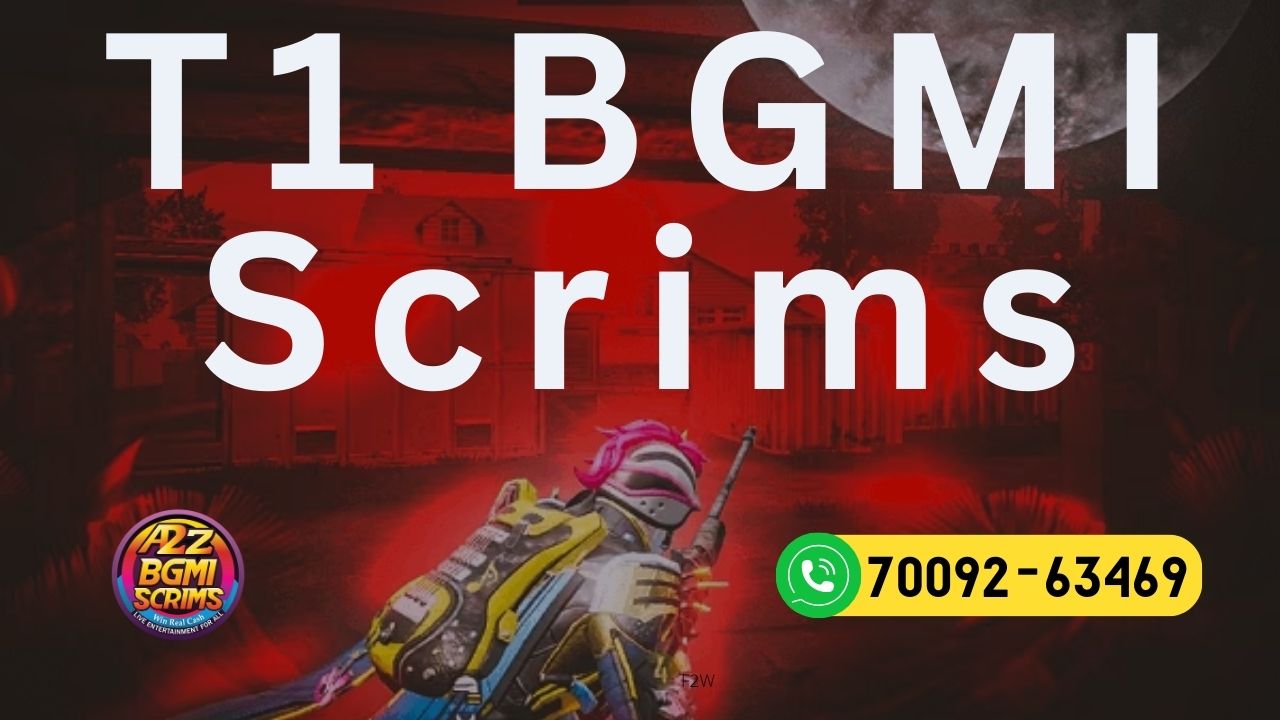Competitive gaming in BGMI (Battlegrounds Mobile India) isn’t limited to tournaments alone. Scrims, or practice scrimmages, provide an essential training ground where teams at different skill levels can test strategies, improve teamwork, and prepare for competitive environments.
In PUBG, scrims are often organized into three tiers: T1, T2, and T3. Each tier represents a different level of gameplay and competition, allowing players to progress steadily from beginner to pro-level gameplay.
This article will explore what T1, T2, and T3 scrims are, how they differ, and why they’re essential for any player aspiring to improve their gaming skills.
What Are T1, T2, T3 Scrims?
T1, T2, and T3 refer to distinct levels of skill and competitiveness in scrims designed to group players and teams with similar capabilities.
T1 Scrims
These are the highest level of scrims for professional or semi-professional teams. Participants in T1 scrims are typically experienced, skilled players who compete in official tournaments, leagues, or other high-stakes competitions. Elite teams use them to fine-tune strategies, improve communication, and adapt to new in-game updates in a high-pressure environment.

T2 Scrims
These are the second tier and generally cater to teams aiming to transition into the professional esports scene. T2 scrims are designed for advanced players or amateur teams looking to sharpen their skills before moving up to T1. T2 scrims are competitive but slightly less intense than T1, allowing teams to develop their abilities without facing the top-tier elite players.
T3 Scrims
T3 scrims are entry-level competitive matches where beginners and amateur teams can practice. These scrims are essential for players who want to take their first steps into competitive gaming, allowing them to gain experience in a more relaxed, low-stakes environment.

Specialties of T1, T2 and T3 Scrims
1) Skill Level and Competition Intensity
- T1 Scrims: T1 scrims are highly competitive and rigorous, with players competing at an advanced or professional level. The coordination and precision in these matches are intense, as most T1 teams come prepared with highly detailed strategies and practiced routines.
- T2 Scrims: T2 scrims are challenging but more accessible for teams transitioning from casual to competitive play. While the competition is fierce, it is generally more forgiving compared to T1. This tier is ideal for players to hone their skills and learn from mistakes without the same high stakes or relentless pressure of T1 matches.
- T3 Scrims: T3 Scrims focus on skill-building. The atmosphere is generally more forgiving, allowing players to experiment without the high-pressure demands of upper tiers. Players focus on mastering basic techniques, understanding positioning, and building team communication skills.
2) Strategic Play and Game Knowledge
- T1 Scrims: Strategies in T1 scrims are often highly complex, involving precise movements, advanced rotations, and perfect timing. Professional teams spend hours practicing strategies specifically for T1 scrims, and players are expected to have deep game knowledge and situational awareness.
- T2 Scrims: In T2 scrims, teams are still developing and refining their strategies through trial and error. Though there are fewer advanced tactics than T1, teams in T2 scrims work hard to improve communication, positioning, and teamwork.
- T3 Scrims: T3 Scrims are an ideal setting for players to learn how to work as a team, communicate effectively, and understand each player’s role in various situations. Players who excel in T3 can work up to T2 scrims, climbing the ranks as their skills develop.
Benefits of Participating in T1, T2, and T3 Scrims
Each tier of scrims offers unique benefits to players, fostering growth at every level.
1) Skill Development
T3, T2, and T1 scrims each provide a platform to build and sharpen specific skills, from basic mechanics to advanced strategies.
2) Team Coordination
Scrims, especially in higher tiers, demand flawless communication and teamwork. Practicing in these environments prepares players for the collaborative demands of tournaments.
3) Pathway to Professional Gaming
Players who consistently perform well in T3 scrims can move up to T2, and eventually T1, creating a natural progression path toward professional gaming.
4) Exposure to Competitive Play
Scrims offer a glimpse into the world of esports, allowing players to experience high-pressure scenarios similar to those in tournaments.
Final Thoughts
T1, T2, and T3 scrims offer a structured environment for players to develop skills and gain experience at various competitive levels. Each tier provides unique opportunities and challenges, from the elite competition of T1 to the learning-focused atmosphere of T3.

